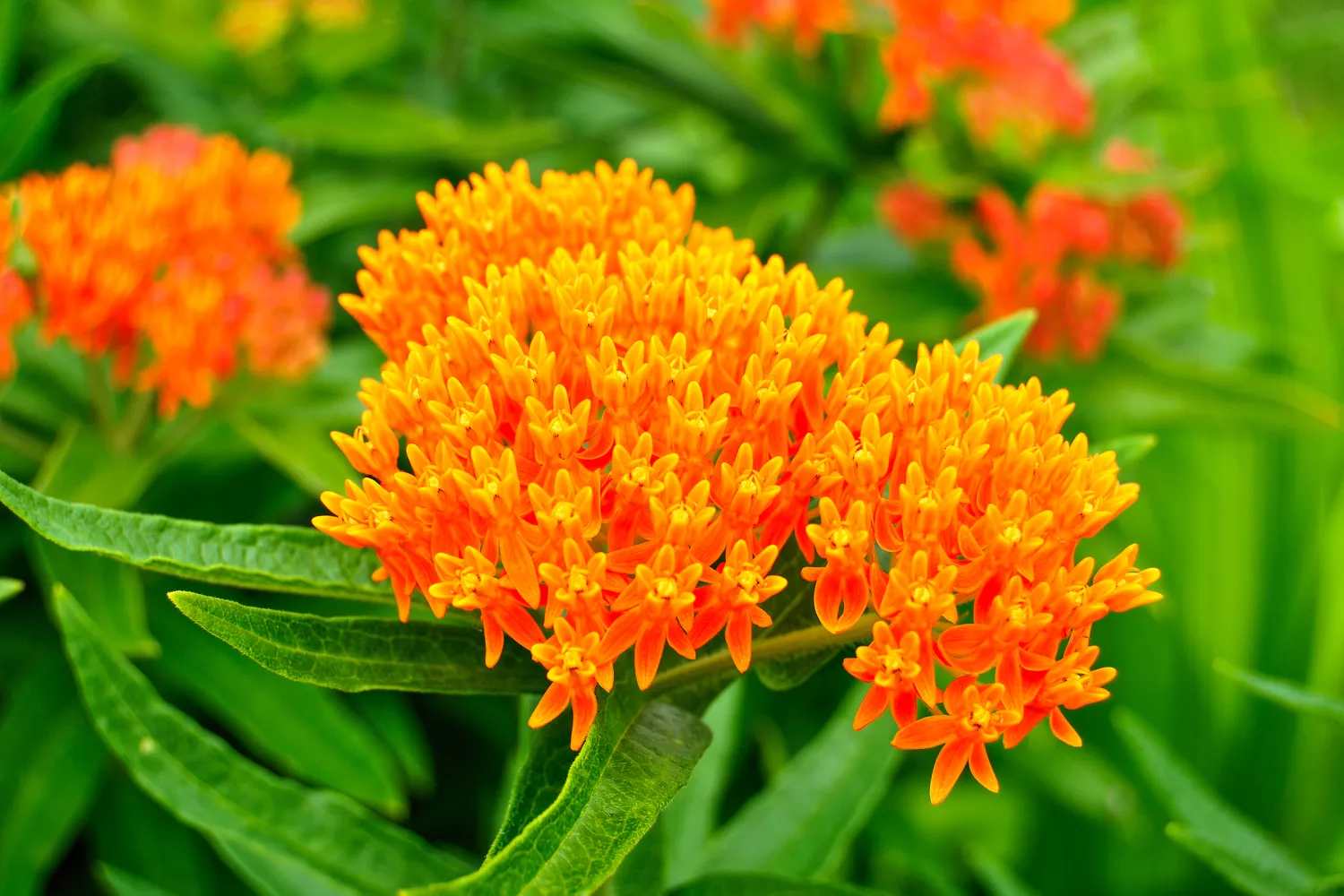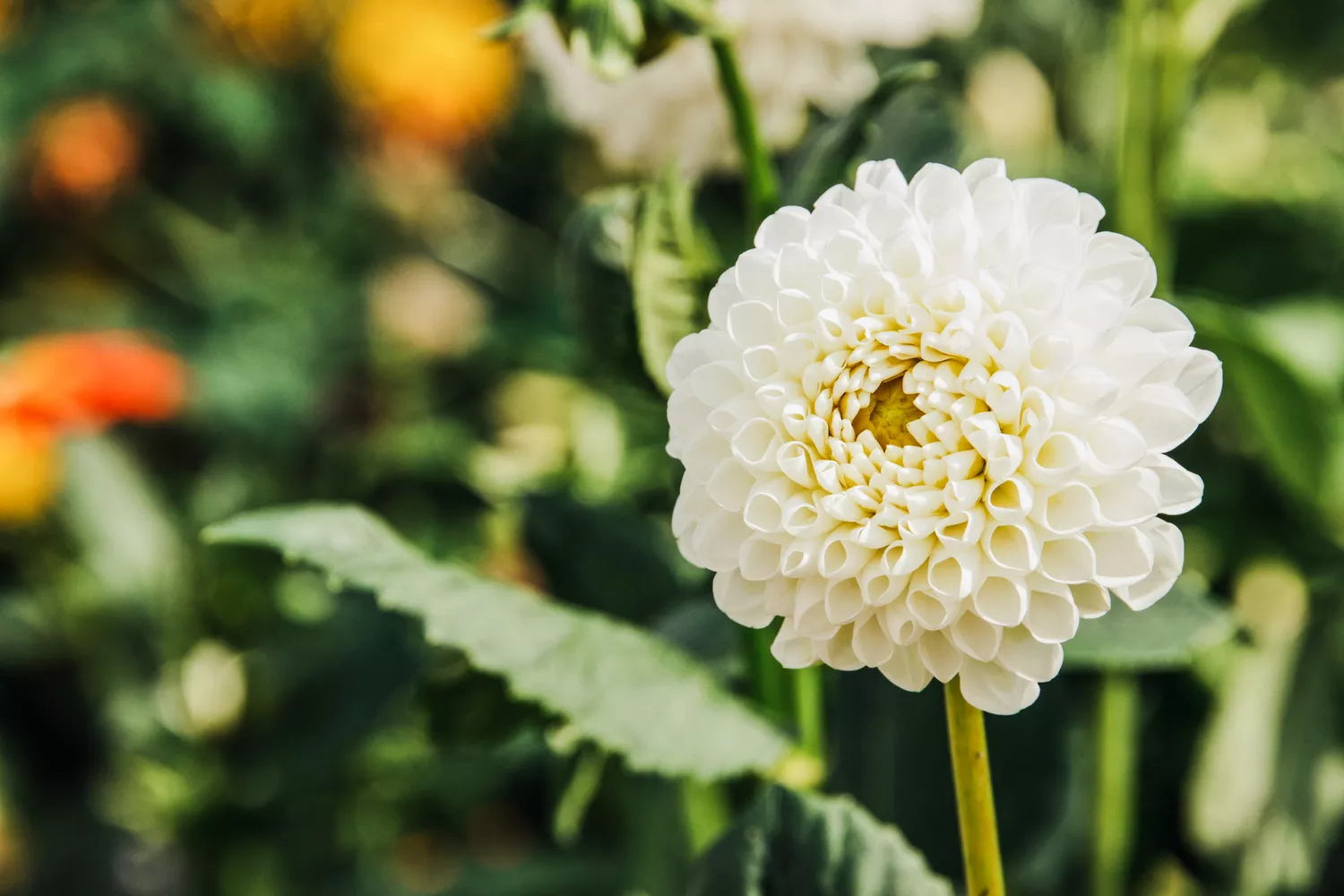
If you love the color orange, consider including a pop of it to your garden, where it can separate all-white beds or complement other bold brights like fuchsia and red. Orange flowers are likewise the ultimate lawn accent: They command the eye (and serve as a centerpiece for a part of your landscape you want to highlight) and supply a welcome contrast to the stretch of verdant, lavish lawn you work hard to preserve.
Including orange flowers to your landscape doesn’t simply have visual benefits. You’ll likewise make a couple of pollinators pleased in the process. Butterflies find orange among the most appealing hues in nature, according to the National Wildlife Federation.1 Ready to include a few of these statement bloomers to your area? Ahead, Douglas Conley, a garden planner with the Matthaei Botanical Gardens at the University of Michigan, and gardener Shannon Currey with Izel Native Plants call some of their all-time favorites.
Heliopsis helianthoides var. scabra lightens up almost any landscape– even in bad and clay soil– with happy, two-toned blooms in orange and yellow. “It weaves in truly well with other perennials,” Currey states. “I like it in a combined planting. And it has striking, almost burgundy-colored foliage, specifically in cooler climates.”
Fast-growing Gaillardia pulchella draws in bees, butterflies, and birds, who feed on its seed heads. “It would be fantastic in addition to the butterfly milkweed,” Currey states. “Both like well-drained, rocky, or sandy soils.” Consider it along a path with a sandy base, where it will thrive and also reseed.
Purchasers utilized to skip Asclepias tuberosa in garden centers when it wasn’t in bloom, Currey states. “But when the general public realized it was such a pollinator powerhouse, it ended up being popular. Now we can’t grow enough,” she says.
More to like about this orange milkweed variety: It’s easy to grow. And while most people only associate it with queen butterflies, which need it for egg laying and larvae support, this seasonal feeds a wide variety of other pollinators, too, including hummingbirds and bees.
, Rudbeckia triloba flowers a lot. “This plant will do well in a lot of various kinds of situations,” Currey says.
And while each orange flower will not live more than 4 or 5 years, “Prairie Glow” will reseed on its own. “People get a little shy about brief perennials,” she states. “But there are some fantastic ones that are well worth having. It’s well worth replenishing them or allowing them to reseed.”
A moms and dad plant to the more familiar Louisiana iris, Iris fulva has been gaining fans outside its initial variety in the Mississippi River Valley for its capability to thrive in saturated soil. “This is a beautiful iris,” Currey states, including that this late spring orange flower will provide you a nice succession of blooms with other perennials that also love damp or moist soils, including New York ironweed (Vernonia noveboracensis), durable hibiscus (Hibiscus moscheutos), and Joe Pye weed (Eutrochium).
Belonging to portions of Canada and the Eastern and Southern U.S., Platanthera ciliaris enjoys peaty bogs and meadows. The orange flower blooms for about a month in late summer, producing clusters of fragile tangerine blossoms with whisker-like lower petals. If you have acidic soil and a boggy site– perhaps a pond or stream– it’s an enjoyable alternative to try. “We’re not all going to have the site conditions for this one, but it is quite widespread from Ontario to Florida,” states Conley.
For the juiciest shade of soda-pop orange you’ve ever seen, take a look at Kniphofia pyromania. With its soft, grass-like foliage, it would be a great companion to Liriope, with its comparable foliage shape and cool, spiky lavender blossoms, says Conley.
Once a year, from mid- to late summer season, hundreds of stunning Lilium lancifolium plants flower along a winding pergola near the Tenant House guest cottage on Martha’s estate in Katonah, N.Y. Profuse bloomers, tiger lilies can produce as lots of as 10 flowers per stem. Conley is a fan of this durable, exotic-looking seasonal, too. “We have one right outside our yard at the primary entrance to your house that might be our most awaited flower of the year,” he states.
Birds, bees, and hummingbirds like the coral-orange blooms of honeysuckle Lonireca sempervirens “Magnifica,” Conley discusses. A native honeysuckle, it can manage pruning however does not need it (unlike its intrusive cousin, Lonicera Japonica). “If you’ve got a trellis or an arbor, you can tuck it in with a clematis and they’ll cover various colors and flowering times,” he states.
Lilium superbum grows wild in the mountains of North Carolina, a couple of hours’ drive from Currey’s house in Durham. “It’s really remarkable looking, almost like an Oriental or Asiatic lily, with multiple flowers hanging from upside down,” she states. “It’s practically like it’s not genuine.” In the house garden, Turk’s Cap Lily develops a remarkable focal point along with a food source for pollinators.



